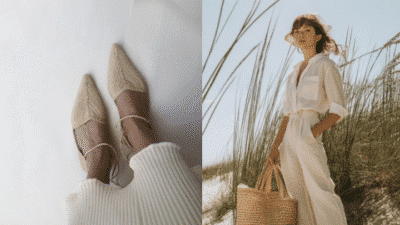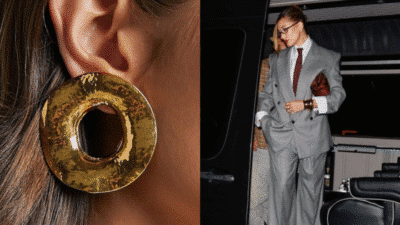Fashion magazines remain a key source of style inspiration even as social media grows in popularity. They offer a unique window into high-end fashion, beauty tips, and celebrity news that many readers still enjoy. Popular magazines like Vogue, Harper’s Bazaar, and Cosmopolitan continue to lead the way by providing trusted insights and exclusive content.
These magazines not only showcase the latest trends but also feature interviews with designers and experts, giving readers a deeper look at the fashion world. While influencers share quick style ideas, magazines provide detailed stories and high-quality photography that many find valuable.
For those who love fashion, these publications offer a mix of creativity, elegance, and lifestyle inspiration. They hold a special place for anyone wanting to stay updated with both classic and modern style ideas.
Overview of Popular Fashion Magazines
Popular fashion magazines stand out by combining stunning visuals, exclusive interviews, and trend insights. They reflect current style movements and reach diverse audiences with different tastes and interests in fashion.
Defining Popular Fashion Magazines


Popular fashion magazines focus on high-quality photography, fashion news, and industry updates. They cover runway shows, new collections, and interviews with designers and models. Icons like Vogue and Harper’s Bazaar are known for setting trends and shaping fashion culture globally.
These magazines offer a mix of content that includes beauty tips, lifestyle articles, and cultural topics related to fashion. This balance keeps readers engaged, offering more than just clothes and style. Their success often depends on how well they connect with both mainstream and niche fashion followers.
Key Trends in Modern Fashion Publications


Today’s fashion magazines emphasize digital presence alongside print editions. Many have strong websites and social media to share videos, behind-the-scenes looks, and real-time updates. This helps magazines stay relevant in a fast-moving industry.
Sustainability and diversity are major focuses. Magazines highlight eco-friendly brands, inclusive fashion shows, and social justice issues. They also experiment with different formats like interactive content and podcasts to reach younger audiences. Visual storytelling with bold photography remains central.
Magazine Readership Demographics

Fashion magazines attract a wide range of readers, from teenagers to adults in their 40s and 50s. Most readers have a keen interest in style, beauty, and lifestyle trends. Women make up the majority of the audience, but men’s fashion coverage is growing.
Readers tend to be urban, educated, and often work in creative fields or industries related to fashion. Many rely on magazines for lifestyle inspiration, shopping guides, and updates on cultural events. Accessibility through digital platforms has expanded readership globally.
Leading Fashion Magazines Globally
Some fashion magazines lead the global scene by setting trends, featuring top designers, and shaping style with their unique voices. Each brand offers something different, from big editorial spreads to insider industry news and cultural stories.
Vogue and Its International Editions


Vogue is one of the most famous fashion magazines worldwide. It started in 1892 and has grown to include many editions like Vogue Paris, Vogue Italia, and Vogue Japan. Each edition reflects local fashion trends while keeping Vogue’s signature high-end style.


Anna Wintour transformed Vogue in the late 20th century, making it an influential fashion authority. Besides the main magazine, Vogue also created Teen Vogue and Men’s Vogue. It covers runway shows, designer profiles, beauty trends, and lifestyle topics.
Harper’s Bazaar Leadership


Harper’s Bazaar focuses on luxury fashion and culture. It often features interviews with designers and fashion insiders. The magazine also gives readers beauty advice and previews of new collections.
Unlike some magazines, Harper’s Bazaar blends fashion with cultural discussion. It covers celebrity news but keeps its primary focus on high-end style and the fashion industry. Its clean, elegant design appeals to those who love classic yet modern fashion.
ELLE’s Global Influence


ELLE is known for mixing fashion trends with lifestyle content. It has editions in over 40 countries, making it a global platform for both style and social topics.
The magazine shines in promoting young designers and fresh ideas. ELLE often addresses women’s issues alongside fashion, making it more than just a style guide. Its accessible tone and contemporary visuals attract a broad audience.
Marie Claire’s Unique Position


Marie Claire stands out by combining fashion with stories about women’s lives and social matters. It often discusses health, career, and global women’s rights alongside fashion coverage.
This magazine is recognized for balancing strong editorial content with stylish photography. It appeals to readers interested in fashion but also looking for meaningful stories. The blend of activism and style gives Marie Claire a unique voice in the crowded fashion magazine world.
Fashion Magazines Shaping the Industry
Fashion magazines continue to influence what people wear and how designers show their work. They do this through fresh editorial ideas, powerful cover stories, and special projects with designers that bring new styles into the spotlight.
Innovative Editorial Contributions
Many magazines create unique content that pushes fashion in new directions. They mix stories about culture, beauty, and lifestyle with striking photos and fresh ideas. For example, Harper’s Bazaar offers interviews with designers and insider views on new collections that help readers understand the latest trends.
These magazines also highlight rising talent and diverse voices in fashion, showing styles beyond the runway. Their articles and photo shoots often set the tone for what comes next in fashion, making them a starting point for industry changes.
Influential Cover Stories


Cover stories grab attention and often focus on celebrities or important cultural topics. These covers do more than sell magazines; they shape public ideas about beauty and style. When big names appear on covers, it can boost both the celebrity and the magazine’s influence.
Magazines like Vogue use their covers to showcase couture pieces and trendy looks, often setting fashion rules that others follow. They choose cover models and themes that reflect or challenge social trends, adding depth to the fashion conversation.
Collaborations With Designers


Fashion magazines work closely with designers to highlight new collections and creative projects. These partnerships allow magazines to feature exclusive previews that readers can’t find anywhere else.
Designers benefit from this exposure, reaching a larger audience through striking visuals and stories. Sometimes, magazines help launch limited-edition items or special campaigns, combining their platform with a designer’s vision to create buzz and excitement in the fashion world.
Digital Transformation in Fashion Publications
Fashion magazines have shifted from just print to digital platforms, changing how readers access content. They now use websites, social media, and interactive tools to reach and engage audiences faster and in new ways.
Rise of Online Fashion Magazines


Many popular fashion magazines like Vogue, Elle, and GQ have moved most of their content online. Instead of waiting for a monthly issue, readers can access fresh fashion news and trends anytime. This shift has helped magazines stay relevant as people prefer quick access on phones and computers.
Online versions often include video interviews, style guides, and instant updates. This digital focus also opens up new job roles in media and marketing that didn’t exist with print alone.
Social Media Integration


Social media platforms like Instagram, TikTok, and Twitter now shape fashion trends faster than magazines. Fashion publications use these sites to share highlights, sneak peeks, and live event coverage.
They work with influencers and use hashtags to increase reach. Algorithms on these platforms decide who sees content, so magazines must post regularly and creatively to stay visible.
This real-time sharing helps magazines interact directly with readers and grow their audience beyond traditional boundaries.
Interactive Content Strategies
To keep readers interested, fashion magazines now use interactive content like polls, quizzes, and clickable shopping links. For example, many digital issues link directly to product pages, making it easy for readers to shop the looks they like.
They also add videos, 360-degree photos, and virtual try-ons to enhance the experience. This kind of content allows readers to participate rather than just read, making the magazines feel more personal and modern.
Emerging and Niche Fashion Magazines
New fashion magazines often focus on specific styles or audiences. They bring fresh ideas and highlight voices or issues that bigger magazines might miss. These magazines build strong connections with their readers and often push important trends in the fashion world.
Independent Fashion Publications

Independent fashion magazines are created by small teams or individuals passionate about unique styles and stories. They usually focus on creativity and artistic expression, rather than mass-market appeal.
These magazines often feature original photography and writing. Examples include The Gentlewoman, known for its simple yet elegant design, and other indie titles that celebrate emerging designers.
Indie magazines often connect directly with their readers through digital platforms, allowing for more freedom in content. This connection helps them build loyal communities who value fresh perspectives over mainstream trends.
Culturally Inclusive Titles

Some new magazines focus on culture and diversity in fashion. They showcase different backgrounds, styles, and voices that have been underrepresented in traditional fashion media.
These magazines highlight people of various ethnicities, genders, and experiences. This approach helps readers see fashion as something more global and inclusive.
Many titles also cover the cultural impact of fashion, showing how clothes relate to identity and society. This makes them important sources for readers interested in more than just trends.
Sustainability-Focused Magazines
Sustainability is a growing topic in fashion, and some magazines now center entirely on eco-friendly fashion. These publications highlight brands that use sustainable materials and ethical practices.
They often include advice on reducing waste and choosing long-lasting clothing. Readers can learn about the environmental impact of fast fashion and explore alternatives.
By promoting sustainable fashion, these magazines push the industry toward greener choices. They attract readers who want to make more thoughtful decisions about their wardrobes.
- 633shares
- Facebook0
- Pinterest633
- Twitter0


